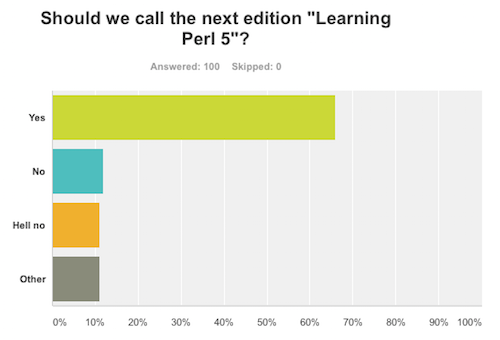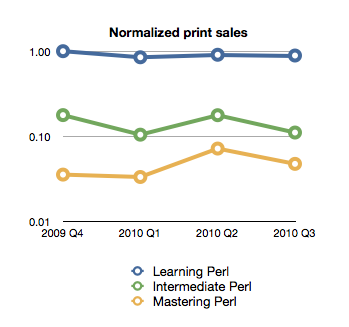After the long slog toward putting an outline into full paragraphs and paragraphs into book form, the day every author thinks may never happen passes by with almost no fanfare: the first day that people can actually trade money for the months of work. That day was sometime last week for Learning Perl, 6th Edition.
Of course, the authors know the publication schedule. That is, the editors tell them the schedule and the authors immediately ignore it. It’s full of all sorts of deadlines, and most of them aren’t really for the author. We meet an intermediate milestone and the editors then take the book away from us. As Lorne Michaels, producer of Saturday Night Live, says, roughly, “The show doesn’t go on because it’s ready; it goes on because it’s 11:30”. Even if he doesn’t say it, it sounds true enough.
A book project, like a software project, can almost always be better. Give an author more time and you get more chapters, longer chapters, and no book. I can fiddle with it forever, but that doesn’t do anyone any good. The editor is the person who can figure out that’s it’s done because he doesn’t have his head in the book all day long. He sees the whole forest even if I might be lost in the woods of a single chapter.
After I turn in the book, there is usually despair and relief at the same time. It’s mostly a fait accompli once the editor takes control, but I always wish I just had another week. How many times have you heard that? How many times have you said that? After a couple of weeks, I forget that I wrote the book. I block it out of my mind, wondering why I have so much free time all of a sudden. How did that happen?
But then, with no warning other than the production schedule I ignored a long time ago, the book is there, ink on paper, in people’s hands, and I’m reminded that I did something. That something lets people comment on what I did, through book reviews but more often, errata. Indeed, the first hint that I had of my book in the wild was an errata report.
As the palettes of dead-tree books make it to the major distribution centers, Amazon and the other book sellers with catalog and shelf the books. They will robotically pick the book when you order it online, and in a couple of days you’ll have the first printing. As you are reading that and making comments, we’ll be working behind the scenes to fix typos and other minor errors for the second printing, and I’ll be on to working on the next book.

